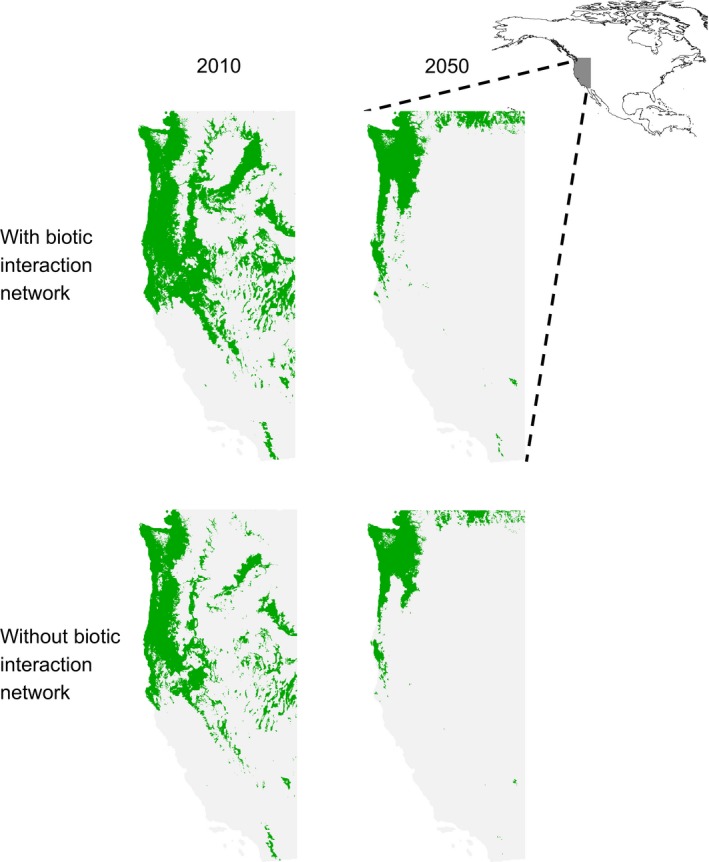Figure 4.

Predicted change in the geographical range of Trifolium microcephalum (nitrogen‐fixing forb, species ID 52) between 2010 (left) and 2050 (right) using species distribution models (SDMs) with (top) and without (bottom) biotic interactions and shared habitat suitability relationships. We considered SDM outputs for the western USA at a resolution of ∼ 800 m × 800 m grid cells. Habitat suitability values were transformed to a binary (green = ‘present’ and grey = ‘absent’) species range using the maxSSS threshold and allowing for dispersal. The two species ranges for 2010 represent the ‘present day’, and the two species ranges for 2050 are based on a greenhouse gas emission scenario that assumes no substantive intervention to curb emissions. Notice that both models predict a smaller geographical range in 2050, but the SDM with biotic interactions and shared habitat suitability relationships predicts a larger relative decrease in geographical range (values in Table S3). Differences between range maps are highlighted in Fig. S16.
